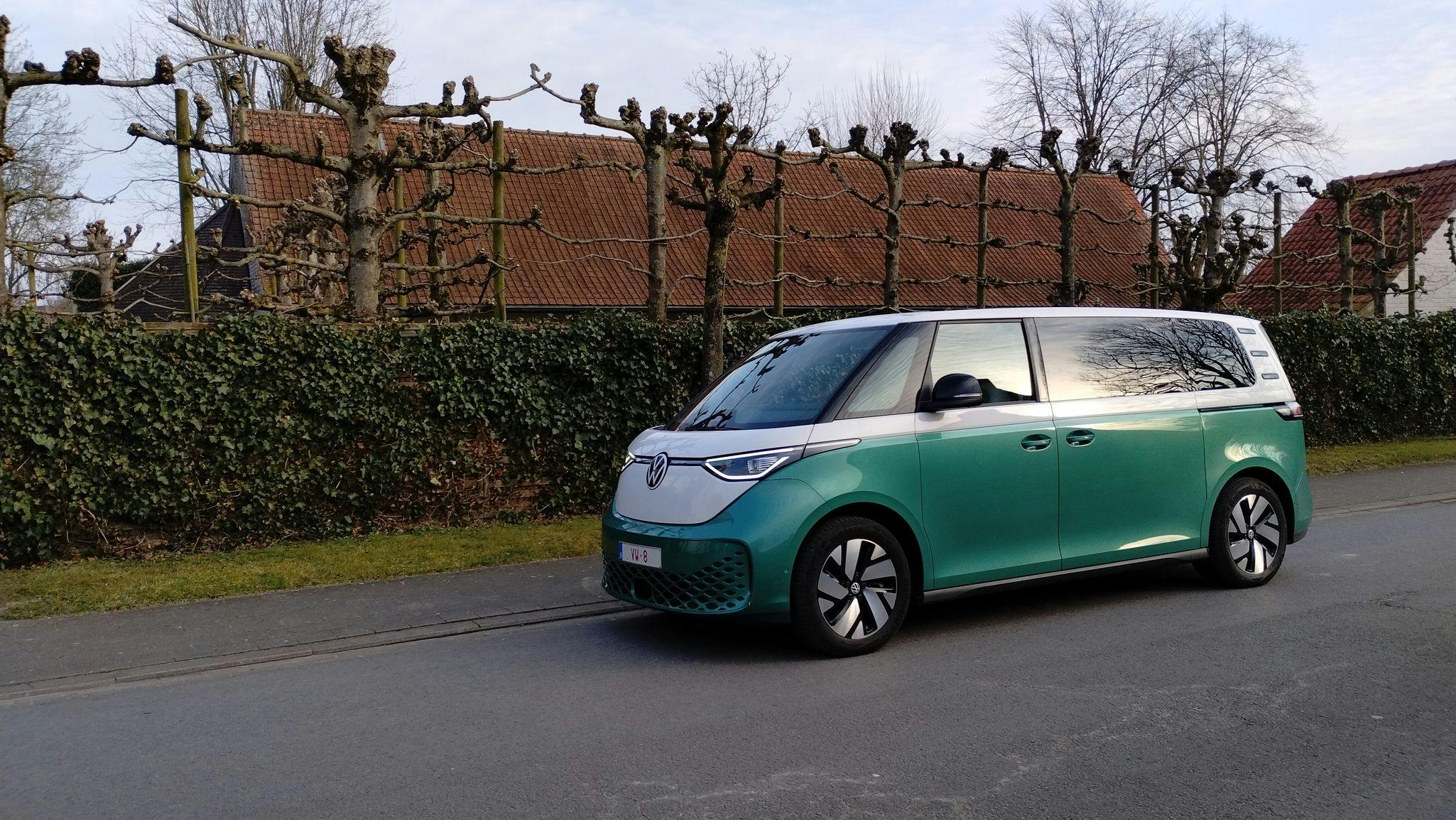It’s impossible to overlook the Volkswagen ID.Buzz; particularly due to its distinctive two-tone paint job, which harks back to its iconic predecessor from the 1950s and ’60s. However, this modern incarnation graces us in the 21st century as an electric vehicle.
Before the introduction of the LWB version, the ID.Buzz was offered exclusively with five seats for family use in Europe. That wasn’t sufficient. The launch of the ID.Buzz LWB addresses this issue. ‘LWB’ stands for ‘long wheelbase,’ which adds an extra 25 centimeters. Consequently, there are now seven actual seating positions along with additional cargo space and enhanced driving range. Therefore, the new model comes equipped with a battery capacity of 86 kilowatt-hours usable (or 91 kilowatt-hours gross), representing a gain of 7 kilowatt-hours over the regular ID.Buzz fitted with identical motors. While the increase may seem modest, every bit helps when it comes to performance improvements. Let’s delve deeper into these details shortly. Now, let us get behind the steering wheel of this vehicle measuring 4.96 meters in length as we embark on a highway journey towards the rural landscapes surrounding Kortrijk in Belgium.
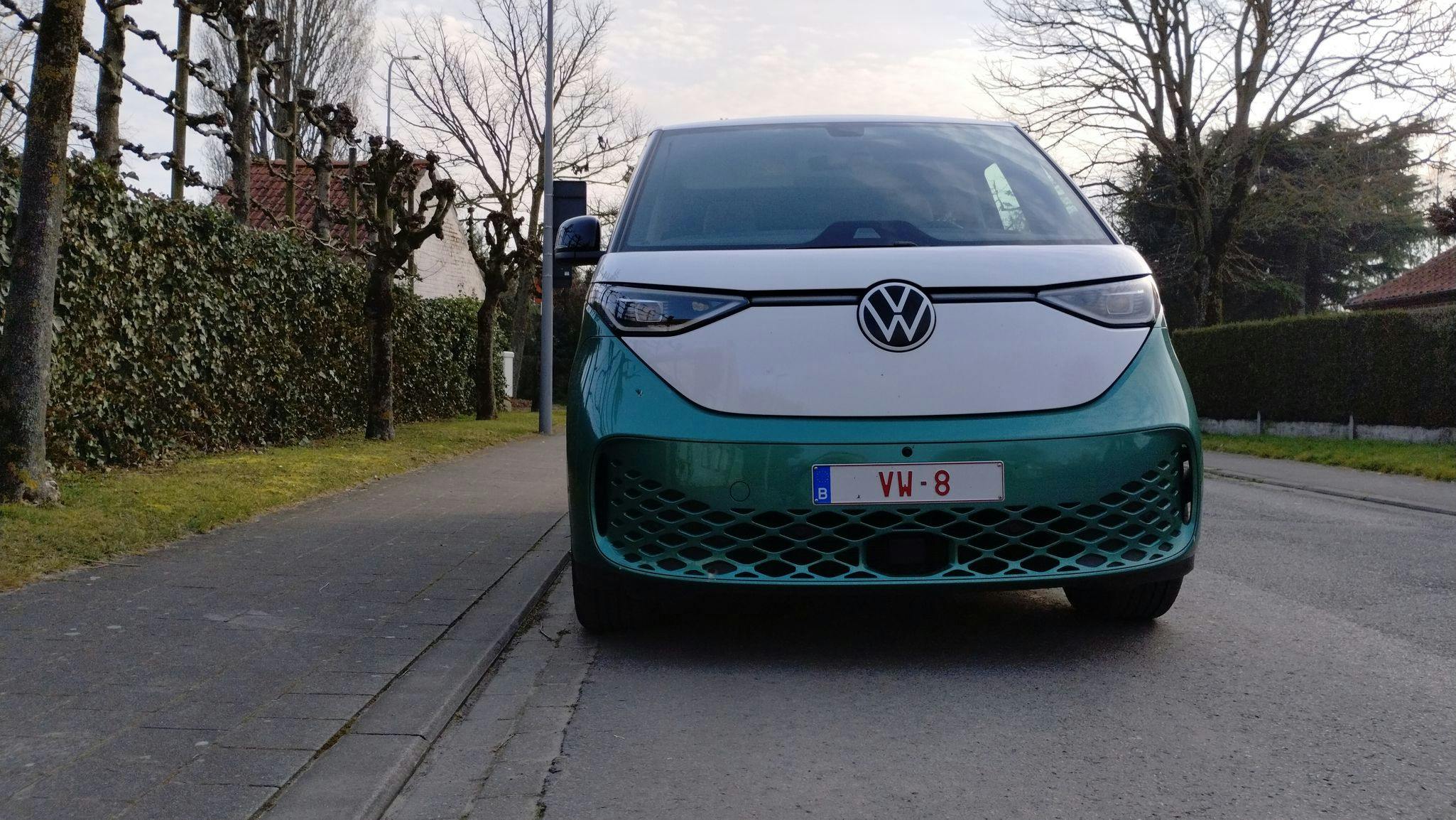
Combi bus
Starting is simply done with the foot on the brake and turning the selector behind the steering wheel by hand. And off we go amidst the admiring winks of passers-by in front of the neo-retro look of our little cargo. We’d almost feel like giving them the surfer’s wave to show off. Especially as we’re on an expedition, the night will be spent on inflatable mattresses after a party for which we’re providing musi. Hence, apart from yours truly and his three passengers that were in the boot, with the third row folded, the bags, the suitcase, the inflatable mattresses, the sleeping bags, the amp, the speakers, a large box of cables and mics, and… the disco ball. Everything fit behind the tailgate (optionallyelectric) and above the storage space for cables and mandatory accessories (first aid kit and triangle for example), without having to unfold the luggage cover. The mic stands did have to be placed behind the rear seats. And as it is planned that you can enter through the sliding door (electric optionally) to access the third row, the seats fold forward. So it’s easy.
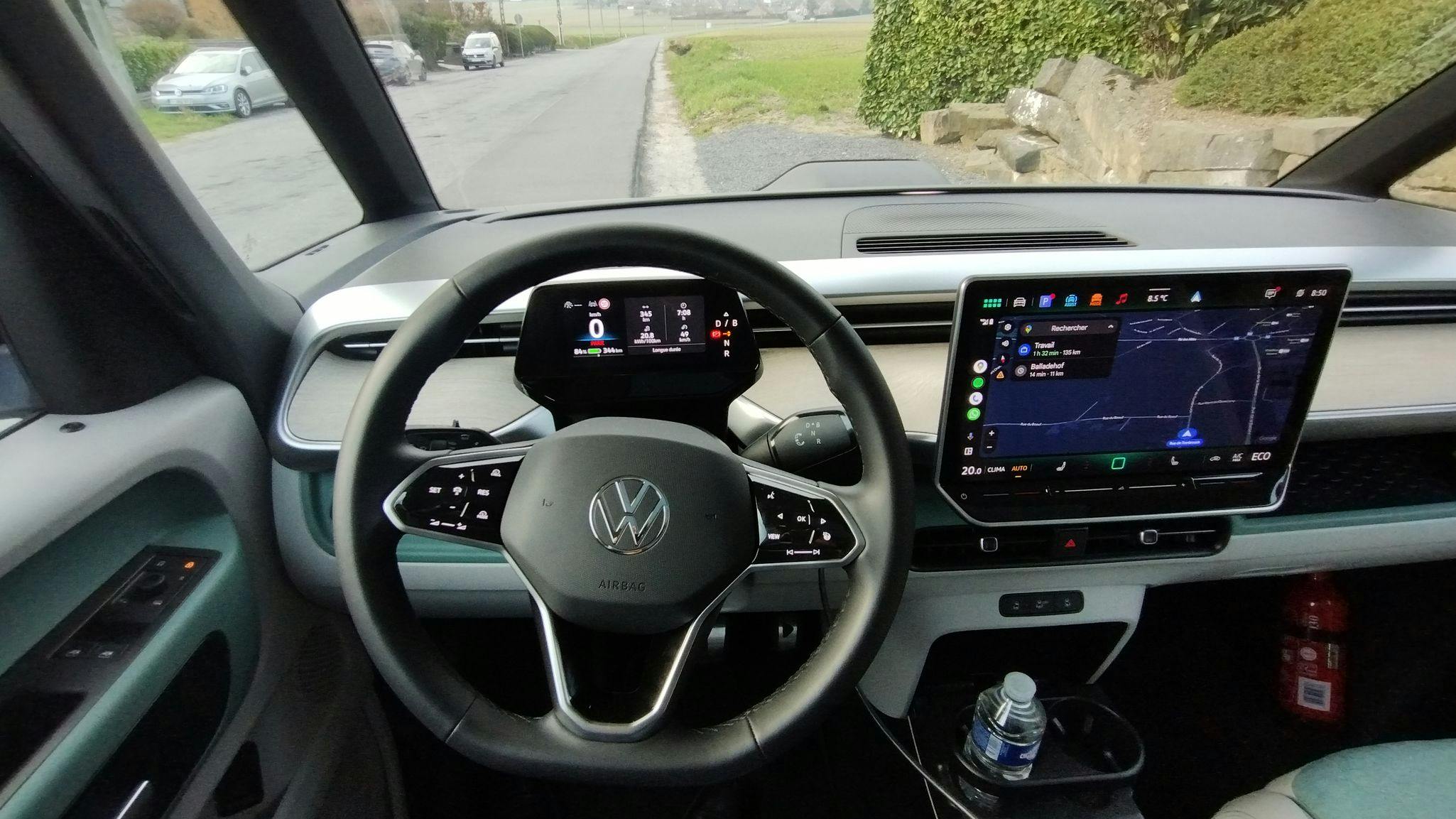
Holiday Atmosphere
In the driver’s position on the right, the driver faces an apparently endless dashboard. An unusable surface. But luckily, there’s a glove box in front of the passenger above the glove compartment. You’ll also find them throughout the cabin. And for smartphones, there’s a slot near the steering wheel in front of two USB-C sockets. These aren’t necessary for a phone with wireless charging, as the receptacle is an induction charger. There’s also USB-C for the front passenger and those in the back. Connectivity is complete, in a friendly environment, despite the plastic. For brightness, the electrochromic panoramic roof changes opacity by sliding your finger over a touch-sensitive area on the headliner. It’s fun! As for the insulating glass (guess what: optional), it creates a cocoon where even the sound of a drunkard is muffled. And yet, of course, the engine is silent!
Tchiki boum
Could you picture the stereotypical scene of individuals swaying to music, moving about in their green and white bus? This describes our experience during this trial (despite none of us being true enthusiasts). The ID.Buzz promotes relaxed discovery. On highways too, driving feels distinctly different. Thanks to the 286 horsepower (210 kilowatts) engine at the back, we easily command the road, using the left lane without hesitation. With a torque of 560 Newton-meters, accelerating becomes effortless; it can go from zero to 100 kilometers per hour in just 7.9 seconds under skilled control. The top speed reaches up to 160 km/h.
Nonetheless, handling curves and circles requires caution because of how bulky the vehicle seems. Despite having a lower center of gravity aided by the heavy battery pack, navigating tight spaces remains challenging as the shape resembles a large milk carton. Nevertheless, Volkswagen has optimized the airflow design enough to make extended trips feasible, complemented by an updated fuel-efficient variant within the VW ID lineup.
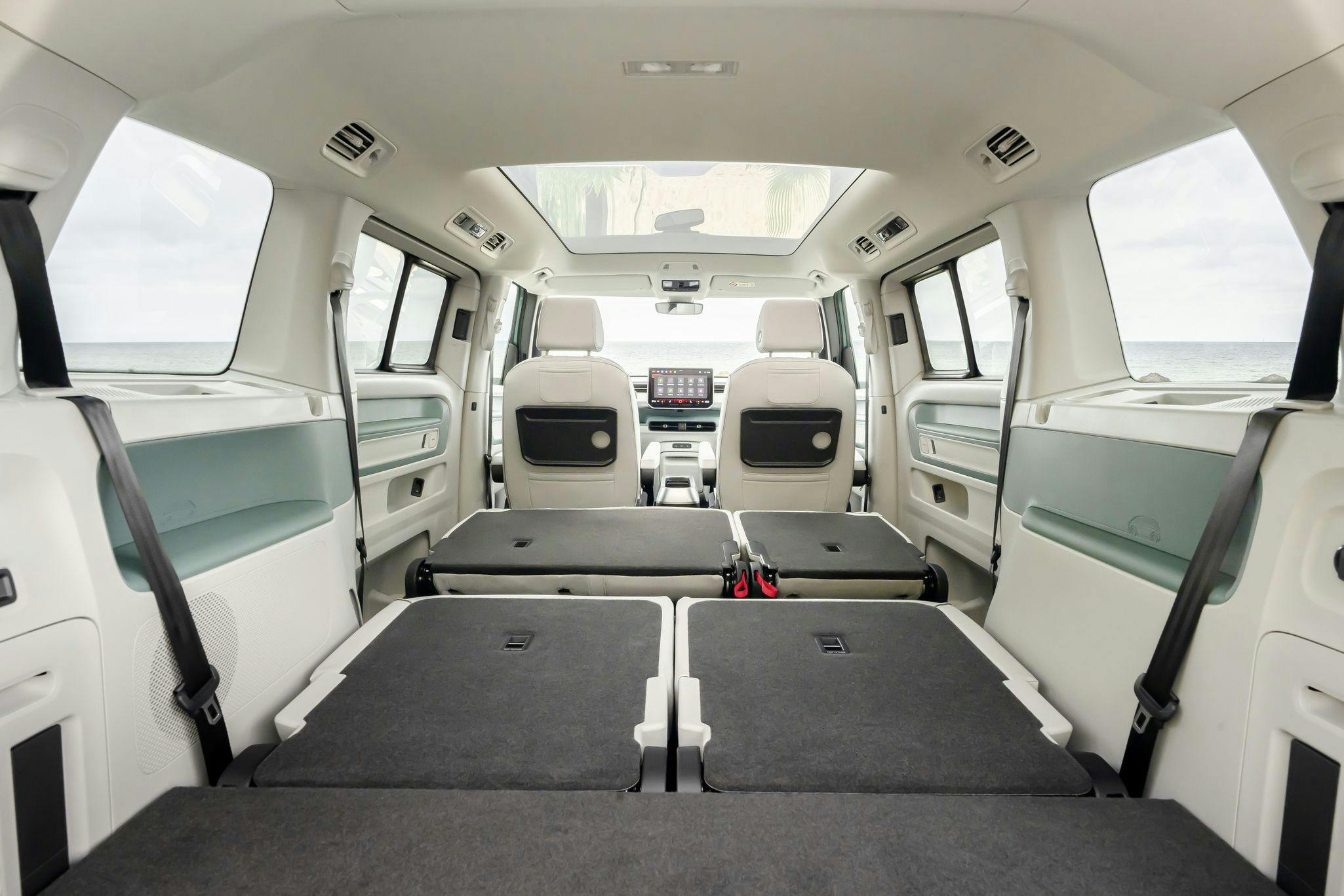
Traveller
In the countryside, it’s possible to stay below 19kWh/100km. It gets trickier at over 100km/h with an average of over 23kWh/100km. We were lucky, the temperature was spring-like, which allowed us to hope for 300km on the motorway and more than 400km combined. Nevertheless, it’s always possible to hope for relay stages of around 2 hours on the motorway in any season, even more than 2h30 when the weather is kind, before looking for a charging station. Then you have to manoeuvre to position the rear right of the vehicle near the socket. The maximum charging speed is 200kW, but it’s obviously the software of the charging station and the car that will decide on the actual power, such as 125kW. In any case, you should anticipate at least a 30-minute break to recover 200km of range, when the weather isn’t too wintry. In fact, for the cold seasons, the car can even have heated seats in the back and a windscreen defrosting system (optional!).
Limited weight
For camping or at the recycling park, it’s possible to tow a trailer thanks to its electric tow hook, with 1000kg permissible on the device. Be careful, with passengers, the total exceeds 3.5 tonnes. In this case, you need to consider the appropriate license. A slight weight caveat in the enthusiasm: the vehicle’s maximum authorised mass is 3340kg. This means you can’t have seven rugby players in the seats and their gear in the 306-litre boot. And when all the seats are folded down with the ID.Buzz turned into a cargo van, the maximum 2469 litres should avoid transporting heavy loads. It’s a family car, not for big removals. Moreover, the comfort and ambient lighting on board are clearly focused on leisure and everyday life. The floating screen for navigation and infotainment is pairing compatible. And then, icing on the cake, despite its size, the turning circle of the ID.Buzz LWB and its cameras greatly facilitate parallel parking in the city, provided you find at least 5.50m free to install it.
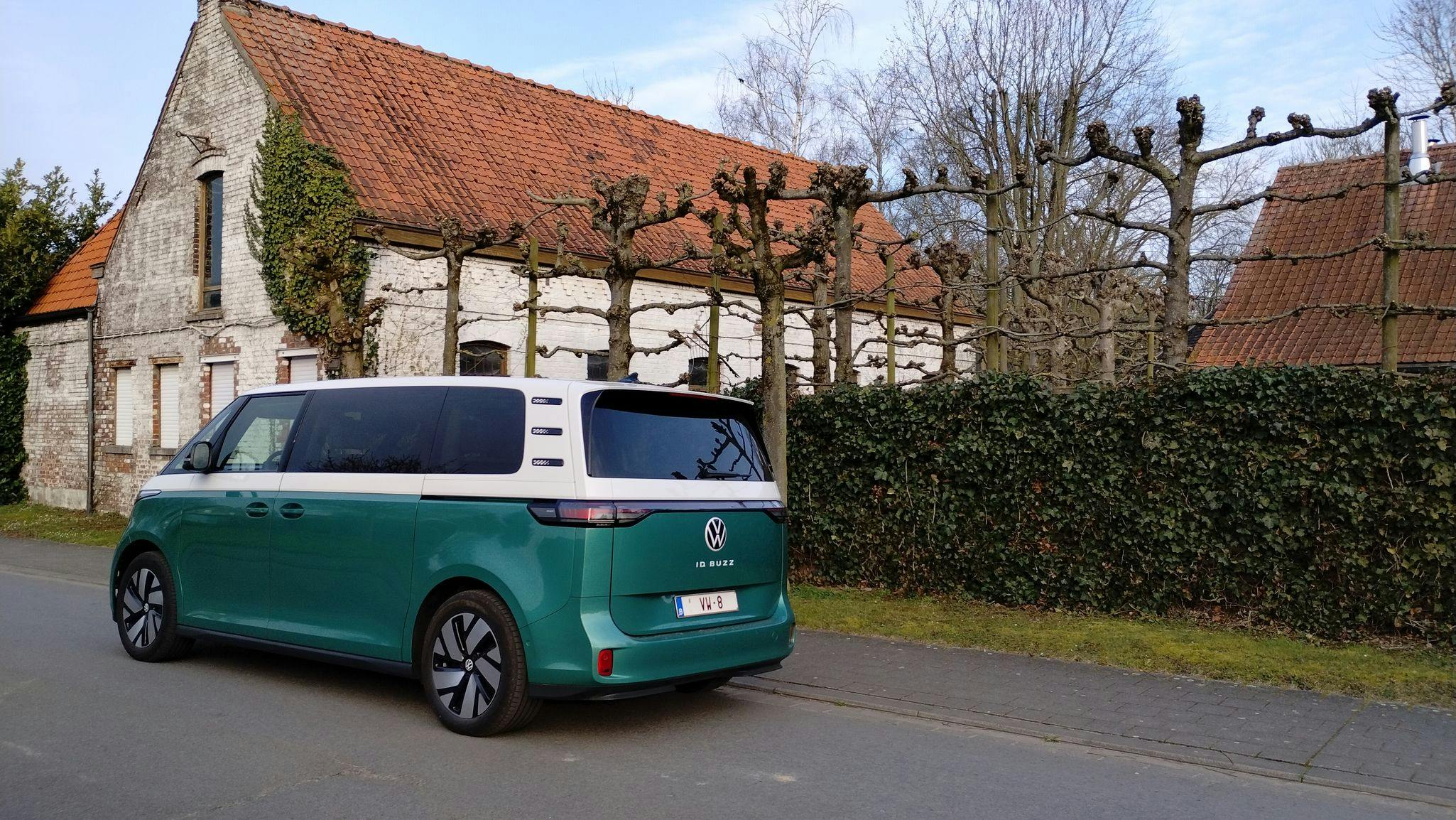
The Painful Price
The ID.Buzz LWB is great. It’s a fun minibus to look at and drive. Plus, its 86kWh battery hints at possibilities for excursions and trips without too much compromise. Although in winter, you may need to slightly lower your ambitions. The starting price of the 286 hp ID.Buzz LWB is at least €62,000 including VAT (compared to €56,000 for the 5-seater 286 hp ID.Buzz with 79 kWh). Our model from the Belgian market, in Pro trim with all its options (including the infotainment pack at €1,657, the comfort pack at €3,091, the towing device, sliding doors and electric tailgate at €3,130, two-tone bodywork, all driving aids at €2,585, a stylish interior to €4,114…) cost a whopping €85,722 (and some cents)! Wow, impact zone… In France, you can expect to pay at least €58,400 for the 7-seater ID.Buzz Pro. In Switzerland, the “base” price for the Pro trim in long wheelbase is 71,000 CHF. And in Canada, it almost reaches 81,000 CAD. There you go…
(MH with Olivier Duquesne – Source: Volkswagen – Images: © Olivier Duquesne & Volkswagen)
